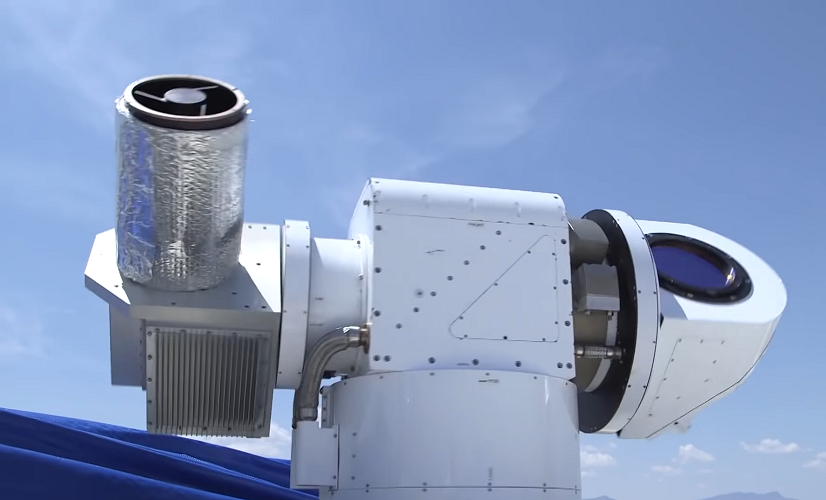This post is also available in:
 עברית (Hebrew)
עברית (Hebrew)
The United States Air Force has recently been testing an anti-UAV laser defense system. The system has demonstrated that it is capable of handling several threats at a time. The United States military and more specifically, the Air Force, have been increasing their counter drone capabilities as a means to defend their military and air bases from hostile enemy drones.
The Advanced Test High Energy Asset, also known as ATHENA, is a 30 kilowatt laser system that utilizes the Accelerated Laser Demonstration Initiative (ALADIN) laser. The ALADIN laser combines the power of three lasers in order to create a 30 kilowatt beam. Using multiple beams allows the systems to fire weaker lasers and still manage to shoot down aerial threats. The system uses lasers to burn holes and melt the aircraft’s shape or fuel tank causing it to ignite.
ATHENA’s developer, Lockheed Martin, has stated that the system has managed to shoot down winged UAVS and quadcopter drones.
What concerns the United States Air Force is that a typical quadcopter drone carrying a grenade sized explosive could be enough to completely destroy an $80 million fighter jet, because of this the United States finds it critical to strengthen its anti-UAV capabilities.
Just last year, Russian forces were forced to fight off a swarm of Syrian controlled drones when a Russian military base was attacked according to Popularmechanics.com. Luckily for the Russians, they managed to thwart the threat, however the attacked has shown the Russians, and the world, that the threat of drone swarms is only beginning to gain speed.
Lockheed Martin has claimed that ATHENA is also capable of shooting down rockets and artillery shells. When firing against artillery, the system works autonomously, immediately firing the shell out of the sky since permission from human operators would take too long in the case of an artillery strike.


























